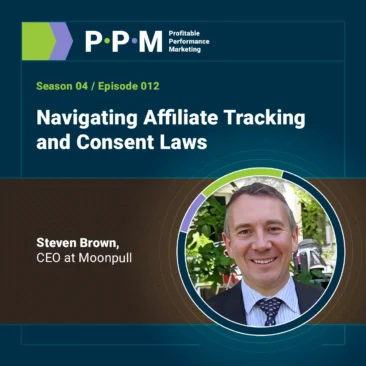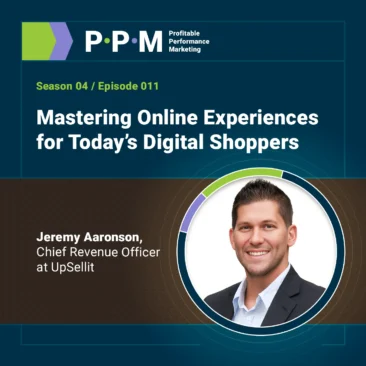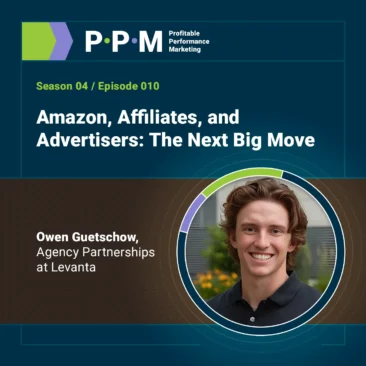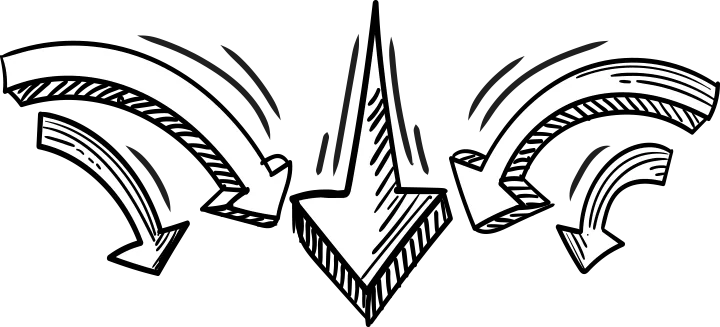Season 02 / Episode 013
The Rise of the Affluencer
Note: if you get only a 30 second preview, please log into your Spotify account, or find us on one of several other podcast services.
Summary
In this episode I cover what has become a topic of some concern for advertisers: influencers. Over the last two years advertisers have really wanted their affiliate channels to not only drive bottom-of-funnel sales, but share in more top of funnel acquisition efforts. This has lead to a stronger push toward folding content creators and influencers into their affiliate programs.
Tune in to find out how the landscape of affiliate marketing is evolving and how we’re addressing these changes. Don’t get left behind!
Listen
Share
Notify
Transcript
Jamie Birch: Hey, all our listeners out there. I am Jamie Birch, your host of The Profitable Performance Marketing podcast, and the founder and CEO of JEBCommerce, an award-winning marketing agency. Well, I hope you’re all doing well and made it through an exciting Q4, and your way to navigating the very crazy world we live in right now, and finding success with your digital marketing.
Now, there’s a lot that has changed since the last time we recorded an episode. And you’ll find with some guests coming up, we’re going to be talking about a lot of the things that are going on in the world and how we, as leaders, as digital marketers, as affiliate marketers navigate all the stuff that’s going on.
But today we’re going to talk about something very affiliate-specific. And what I want to talk about, I want to talk about this thing that’s really becoming prominent in all our conversations with our advertising clients and our prospects. And that is influencers.
Now, probably 100% of our conversations that we’re having, our meetings with clients, our meetings with prospects, they all are bringing up this concept of influencers. So I want to introduce another term today that we’re using at JEB to talk about a very key differentiation between influencer and this new designation that we’re seeing with affiliates. It’s super important.
I’m also excited to, later this season, introduce you to our new Director of Affiliate Marketing, Blagica Bottigliero. Blagica comes to us with quite a broad and extensive, impressive CV, and is the only person I’ve ever met or worked with that’s won an Emmy for their digital marketing. She did that in Chicago, doing some pretty fantastic things.
So you have to look her up on our site and on LinkedIn. That’s Blagica Bottigliero. We’ll include those links in our show notes as well. But we’ll be having her on the show shortly in season two. And we’ll learn all about her experience in what she has going on and what she brings to the channel, but also to JEB and our clients.
But Blagica recently wrote a really wonderful article on influencers and the rise of the affluencer. So we’ll include a link in our show notes to that. Or you can go directly to jebcommerce.com/affluencer, and that’s with two F’s, to read more. But this concept of the affluencer, and that’s the new term that we want to bring to you today. That is what we’re talking about, the difference between an influencer and an affluencer. Blagica’s article talks about it quite eloquently.
But let’s talk about influencers. So for many years now, advertisers have looked at influencers as a holy grail of affiliate marketing and new customer acquisition. But there’s also been another side of that. They’ve also looked at it as – Seen them as frauds. There’s been so many other difficulties with the reporting that have gone on. And affiliate managers have seen them as frauds and headaches, difficult to show an ROI. And really, because it takes so much time to work with an influencer, and you just never really know what’s going to happen with that.
And many influencers in the past, they purchased likes and followers. So it’s been a difficult area. But the prospect, the hope of top-of-funnel, new customer introductions has been so attractive that it’s drawn a lot of advertisers to that space in a lot of different ways. But in the last few years, advertisers really wanted their affiliate channels to not only drive bottom-of-funnel, those sales conversions, but also be responsible for more top-of-funnel acquisition efforts. That’s a stronger and more dedicated push to have content creators and influencers in the program.
Blagica talks about how other macro things are going on that’s pushing more budget and more focus to bring top-of-funnel to the affiliate channel. But there are really some unique things about influencers that make it a challenge to work with. And they really fall into two groups. So as I said before, influencers and affluencers. “So, Jamie, what’s an affluencer?” Well, thanks for asking. That’s a great question.
Blagica lays it out in her blog post, the affluencer is someone who is either very familiar with affiliate marketing and/or is currently an affiliate in a brand’s program. The affluencer has a large enough base and level of influence to seek out additional payment elements like slotting fees, an increased commission structure. This category of influencer may not be as large as the typically-defined influencer that is often managed by the brand’s PR team.
Pretty good explanation. So basically put, an affluencer is an influencer who is very comfortable working with the affiliate channel. They know the network’s. They’re comfortable working on those and other affiliate platforms. They understand the payment models. And they understand who they get to work with. And what is required? They need very little education on affiliate marketing, it’s tracking, and the players. And this results in a significant difference in working with them versus an influencer.
Now, an affluencer may also have a smaller audience. But that shouldn’t be looked at as a bad thing. There are micro-influencers, and they may have very strong followings in a small niche. So let’s talk about the influencer. So that’s your content creator, blogger, your blogger, your TikToker. They aren’t educated in affiliate marketing. And they tend to be those influencers we hear people talking about celebrity, mini-celebrities, things like that.
But they have no prior experience or understanding of our commission models, the network’s or the path to work together. They earn their money through either social channels and departments via pay placements or through the PR team and PR agencies. And they have hefty upfront payments, and advertising spends for those sponsored posts.
Now, many of those can work and work well. And we’ve worked with many when arranging influencer campaigns for clients like Johnson & Murphy and INDOCHINO. And I can tell you, those worked quite well. I mean, they worked really, really well. One of them, we have actually case studies on both of those partnerships on our website. One of those, that affiliate, that influencer, became the number three producer all time in the program in the first two months of working together. So just think, like, there is still that potential for influencers to do huge revenue.
Are you enjoying the show so far? You know, running an affiliate program can be very complicated. Running a highly successful affiliate program that grows year after year, well, that can be even more difficult. At JEBCommerce, we’ve been managing affiliate programs for over 17 years in almost every retail category you can imagine. With that experience comes a ton of successes. And we want to share that with you so you can learn what to do to grow your affiliate program.
So we have a section on our website entitled Case Studies. You can access this page by going to jebcommerce.com/casestudies. In this section of our website, you’ll find industry-specific case studies, such as our new travel category case study, strategies and tactics we’ve used to grow incremental sales with our clients, an outline of many different tactics, strategies and partnerships that we’ve executed, cultivated and created in order to grow our clients’ programs substantially year over year, and much, much more. Now, I want you to have access to these 100% for free, simply because you’re a listener of this podcast. You can access these by going to jebcommerce.com/strategies.
Now, back to our show. But let’s talk about the timeline. And this is probably one of the biggest differences between these two groups of affiliates outside of fee structure and cost. Affluencers, they’re very familiar with the space. So working with them requires little education. And our time is spent on negotiating rates, negotiating the actual placement and the overall spend commission structure, things like that. But we don’t have to convince them to work through a network. We don’t have to educate them on working through the channel at all. We don’t have to deal with them any differently than your typical affiliate. And they’re open to more unique ways of tracking results and they tend not to be worried about tracking actual results in terms of sales. For influencers, that can be an issue. So influencers, on the other hand, can be more difficult to work with through the affiliate channel. They take more time to educate on the tracking platform, on the model in general. And they’re rarely okay with commission-only partnerships. They tend to work only through traditional PR channels and require much larger slotting fees than affluencers and in traditional affiliates.
And so, here’s the deal. The biggest mistake advertisers make when dealing with this larger group of affiliates, influencers and putting affluencers and influencers in the same bracket, is really not breaking them out into these two different groups. And they’re interacting with them not according to these two different designations or setting expectations. So the biggest mistake here is they’re treating all influencers as regular affiliates and expecting that same sort of feedback. And they’re not having strategies for each one. And their expectations are that, if you build it, they will come. I’ll open a program and the influencers will come and they’ll get paid a commission, and we’ll get lots of top-of-funnel sales. And that’s just not how it works. So the biggest mistake is not looking at these things differently and grouping them together. Maybe they’re talking about influencers, but they really want affluencers.
Maybe they can only do and work with affluencers, but they’re measuring the program by how many influencers come through the channel and are promoting them. And those are the biggest mistakes. So, you know, if you want an affluencers, these are your smaller niche content creators with an audience, and not the more celebrity or mini-celebrity influencers. Well, you can expect movement quickly. And fees to be lower. And many work on commission-based models. And they’re familiar.
Now, if you want influencers, your timeline needs to be longer, your budgets larger, and expect to spend money testing with different partners over different time frames. Opening your affiliate program and expecting these two groups to produce without significant management time spent on either one is a recipe for disappointment. And treating influencers as they are affluencers or traditional affiliates will lead you to being frustrated, expecting too much way too soon, and will lead to little sale. So we see a ton of prospects. And that’s all they want, is influencers and top-of-funnel. And they aren’t set up to take the time to work through that. Because they’re coming through, typically, direct response sales type of channel, affiliate. They’re expecting, and you may be expecting as a listener here, influencers to behave the same way your direct response sales producing affiliates behave and their timeline. And that’s just not how it works.
So you’ve got to set your expectations right when you’re dealing with these, and you got to put them into groups. “So, Jamie, what should we do now as we wrap up this discussion?” I’ve got a few steps for you here. So, one, self-evaluate. Are influencers part of your growth strategy? And are you trying to manage influencers like you manage affluencers? And do you have the budget and time for influencers? Or are you really looking for affluencers? So there’s a really good time to look and see which am I actually trying to go for? And what is my time frame? That’s the other thing. Look at your time frame. If you need sales now, then you need to look at a traditional affiliate landscape and then measure those affiliates with your primary KPIs.
Now, if you want to do both, and grow top-of-funnel long-term and get sales now, then you probably want to do both. So number two is review your program and categorize. So look through your publisher base, and group them. Give them special destinations as affluencers or influencers, and then create your strategy for outreach, recruitment and optimization based on those two things, and your expectations. So that’s the next one. Review the corporate expectations. So, self-evaluate, review your program, review corporate expectations.
If your company wants influencers for the cost and time of affluencers, you should know this now. Look at that now. You may want to spend some time educating your team on the difference and setting expectations accordingly. Now, you can have a very profitable and successful influencer strategy and a very profitable and successful conversion and sales strategy with traditional affiliates and affluencers. But if you’re trying to generate sales right now with an influencer strategy, you’re going to be disappointed. The time frame, it just takes a long time.
Now, we manage many of these campaigns for clients in travel, food and beverage, outdoor and gear health and beauty, and apparel. And we have very successful ones. But the ones that aren’t successful are the ones that aren’t given enough time to see these things come to fruition given enough budget. Because you do one influencer campaign that doesn’t work, that doesn’t really mean anything. One data point isn’t a trend. One data point provides little value. You have to test. And you have to test over the long term. And that may take a full 12 months to test all the different seasons and different partners to know what to do next year. And then review your technology. So we got to self-evaluate, review your program and categorize, and review corporate expectations. Now review your technology. Because working with these influencers may require a different way to track your sales. And there are some great networks that have tremendous amounts of technology outside a last click, outside of a pixel, so that you can track the sales. So review technology. Make sure your technology allows you to get the type of sales through the type of affiliate that you’re looking for.
So there you have it, our take on the rise of the affluencer strategy that we use here at JEBCommerce. So be sure to read Blagica’s article at jebcommerce.com/affluencer and let us know what you think. We’d love to hear from you in the comments and feedback and share that article with anyone you think would benefit. And if you liked this episode, please share it with your friends on social media and send it directly to anyone you think would benefit from this discussion.
Oh, and before you leave, give us a five-star review and rating on Apple, Stitcher, Spotify, or the podcast player that you are listening to. That goes a long way to exposing more people to these important discussions.
So if you’d like to be a guest we’re booking now for season three of The Profitable Performance Marketing Podcast. So if you have a topic you want to hear me talk about, then let us know at gethelp@jebcommerce.com, and we’ll do everything we can to get that episode on the air. Well, thank you for listening. And have a wonderful day.
Transcript Toggle





